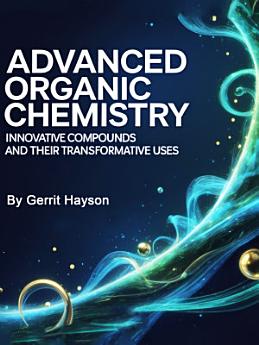Advanced Organic Chemistry: Innovative Compounds and Their Transformative Uses
About this ebook
The modern renaissance in organic chemistry began in earnest during the late twentieth century, accelerated by computational modeling, spectroscopic advances, and a deeper understanding of reaction mechanisms. Today, synthetic chemists possess tools that would have seemed like science fiction to their predecessors. High-throughput screening methods allow for the rapid evaluation of thousands of reaction conditions, while machine learning algorithms can predict optimal synthetic pathways before a single molecule is synthesized in the laboratory.
This technological revolution has enabled the creation of compounds with extraordinary properties. Consider the development of organic semiconductors that rival traditional silicon-based materials, or the synthesis of drug molecules that can selectively target specific cellular pathways with minimal side effects. These achievements represent the culmination of decades of research into understanding how molecular structure dictates function, and how synthetic methodology can be refined to achieve previously impossible transformations.








